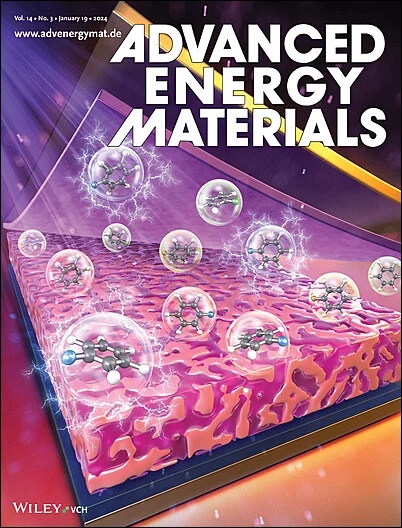Controllable Construction of Active Sites for Catalytic Conversion and Spatial Constraints Applied to High‐Performance Lithium–Sulfur Batteries
IF 26
1区 材料科学
Q1 CHEMISTRY, PHYSICAL
引用次数: 0
Abstract
The structural control of the positive sulfur carrier is very important to inhibit the shuttle effect of polysulfide and improve the overall performance of lithium–sulfur batteries. However, the microstructure of the carbon material carrier is uncontrollable, and it is difficult to coordinate and unify the pores and active sites. Here, Nitrogen and phosphorus co‐doped porous carbon (N/P‐LPC‐900) is obtained through the simple activation method of potassium phosphate to achieve the structural regulation of porous and heteroatoms in one step. N/P‐LPC‐900 shows a graphene‐like porous thin structure, which will provide the particular domain to adsorb polysulfide. The DFT results indicate that N‐6‐P has the strongest catalytic sulfur conversion ability. Further, in situ Raman characterization proves that the signals of Li高性能锂硫电池催化转化活性位点的可控构建及空间约束
正硫载流子的结构控制对于抑制多硫化物的穿梭效应,提高锂硫电池的整体性能至关重要。然而,碳材料载体的微观结构是不可控的,孔隙和活性位点难以协调统一。本研究通过磷酸钾的简单活化法制备了氮磷共掺杂多孔碳(N/P‐LPC‐900),一步实现了多孔和杂原子的结构调控。N/P‐LPC‐900表现出类似石墨烯的多孔薄结构,这将为吸附多硫化物提供特定的区域。DFT结果表明,N‐6‐P具有最强的催化硫转化能力。此外,原位拉曼表征证明,在N/P‐LPC‐900电池的第一阶段放电结束后,电池阳极侧Li2S6和Li2S4的信号明显减弱。理论结合实验验证了在LPC中共掺杂N和P可以有效地催化多硫化物转化为Li2S,从而抑制了穿梭效应。本研究为硫载体的研究提供了可行的途径,并为构建高性能杂原子掺杂多孔碳奠定了理论基础。
本文章由计算机程序翻译,如有差异,请以英文原文为准。
求助全文
约1分钟内获得全文
求助全文
来源期刊

Advanced Energy Materials
CHEMISTRY, PHYSICAL-ENERGY & FUELS
CiteScore
41.90
自引率
4.00%
发文量
889
审稿时长
1.4 months
期刊介绍:
Established in 2011, Advanced Energy Materials is an international, interdisciplinary, English-language journal that focuses on materials used in energy harvesting, conversion, and storage. It is regarded as a top-quality journal alongside Advanced Materials, Advanced Functional Materials, and Small.
With a 2022 Impact Factor of 27.8, Advanced Energy Materials is considered a prime source for the best energy-related research. The journal covers a wide range of topics in energy-related research, including organic and inorganic photovoltaics, batteries and supercapacitors, fuel cells, hydrogen generation and storage, thermoelectrics, water splitting and photocatalysis, solar fuels and thermosolar power, magnetocalorics, and piezoelectronics.
The readership of Advanced Energy Materials includes materials scientists, chemists, physicists, and engineers in both academia and industry. The journal is indexed in various databases and collections, such as Advanced Technologies & Aerospace Database, FIZ Karlsruhe, INSPEC (IET), Science Citation Index Expanded, Technology Collection, and Web of Science, among others.
 求助内容:
求助内容: 应助结果提醒方式:
应助结果提醒方式:


